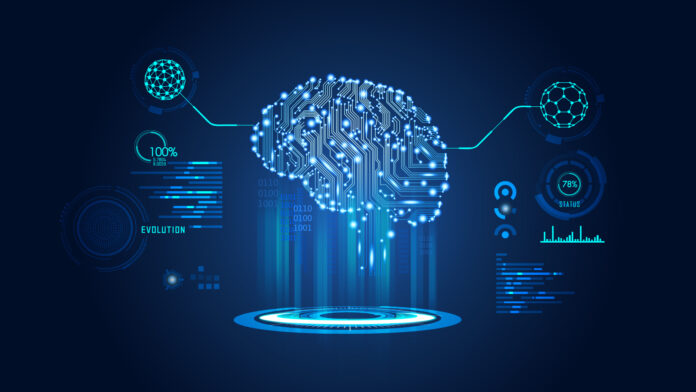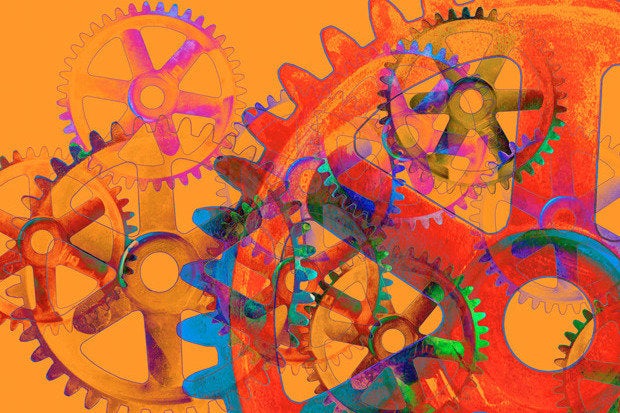Are we running out of time to fix aviation cybersecurity?

Flying remains one of the safest ways to travel, and that's due in large part to continuous efforts to improve air safety. Cultural norms in aviation have rewarded and incentivized a whistleblowing culture, where the lowliest mechanic can throw a red flag and stop a jet from taking off if he notices a potential safety issue. Contrast that with the often-fraught issue of reporting security vulnerabilities, where shame and finger-pointing and buck passing are the norm. The report highlights the problem, writing, "Across much of the cybersecurity landscape, there arguably remains a stigma about discussing cybersecurity vulnerabilities and challenges that go beyond managing sensitive vulnerabilities." A wormable exploit or a backdoored software update — like the backdoored MeDoc software update that started the Petya worm — could cause safety issues at scale. It’s unclear that the aviation industry’s traditional safety thinking is sufficient to meet this challenge. For instance, the report calls out the need for greater information sharing on aviation cybersecurity threats, acknowledging the risk of a Maersk-like scenario and observing rather drily that "other sectors have seen the scale and costs from a single vulnerability and 'wormable' exploit.
AI vs. Machine Learning: Which is Better?

Artificial intelligence came from the word “Artificial” and “Intelligence. Artificial means it is created by a non-natural thing or a human, and intelligence means the ability to think and understand things. Some people think artificial intelligence is a system, but the fact is, it’s within the system. AI has stipulated rules that were pre-determined by an algorithm that was set by a person. The appearance of AI is more often on smartphones, desktop computers, and smartwatch. ... Machine learning is capable of learning from itself. It is a computer system than can adopt knowledge and solve a problem based on its experience. The ML acts on the provided data that was inputted by humans and predicted accurate solutions based on the information that was gathered by the machine/computer. Machine learning has a different algorithm for artificial intelligence. The machine learning algorithm is capable of deciding on its own. The artificial intelligence is capable of answering a pre-determined question with a pre-determined solution.
How AI, Analytics & Blockchain Empower Efficient & Intelligent Supply Chain?

Regulating its promise to disrupt every industry for better, AI is transforming supply chain management as well. The technology has a number of applications in the supply chain which include extraction of information, analysis of data, planning for supply and demand, and better management for autonomous vehicles and warehouses. AI-enabled NLP scans through the supply chain documents like contracts, purchase orders, chat logs with customers or suppliers and significant others to identify commonalities which are used as feedback to optimize SCM as part of continual improvement. ML helps people manage the flow of goods throughout the supply chain while ensuring that raw materials and products are in the right place at the right time. Also, technology can source and process data from different areas and forecast future demand based on external factors. And most importantly, AI helps analyze warehouse processes and optimize the sending, receiving, storing, picking and management of individual products.
Netgear Nighthawk M2 Mobile Router, hands on

Very much designed as a 'travel router' the square lozenge of the M2 measures 105mm by 105mm by 20.5mm and weighs 240g. It's easy to slip into a briefcase or bag when you're travelling, and won't weigh you down. Like its M1 predecessor, the M2 relies on 4GX LTE mobile broadband, as Netgear argues that 5G networks aren't sufficiently widespread to justify the extra cost of adding 5G support. However, Category 20 4GX LTE support means that the M2 doubles its maximum download speed from 1Gbps to 2Gbps, although the upload speed remains the same at 150Mbps. It then uses dual-band 802.11ac to create its own wi-fi network, which can support connections from up to 20 separate devices. The M2 also gains a larger 2.4-inch touch-sensitive display that allows you to quickly configure the router, and to monitor signal strength, data usage and other settings. The Netgear Mobile app provides similar controls for Android and iOS devices, and there's a browser interface available for computers as well.
What is Jenkins? The CI server explained

Today Jenkins is the leading open-source automation server with some 1,400 plugins to support the automation of all kinds of development tasks. The problem Kawaguchi was originally trying to solve, continuous integration and continuous delivery of Java code (i.e. building projects, running tests, doing static code analysis, and deploying) is only one of many processes that people automate with Jenkins. Those 1,400 plugins span five areas: platforms, UI, administration, source code management, and, most frequently, build management. Jenkins is available as a Java 8 WAR archive and installer packages for the major operating systems, as a Homebrew package, as a Docker image, and as source code. The source code is mostly Java, with a few Groovy, Ruby, and Antlr files. You can run the Jenkins WAR standalone or as a servlet in a Java application server such as Tomcat. In either case, it produces a web user interface and accepts calls to its REST API. When you run Jenkins for the first time, it creates an administrative user with a long random password, which you can paste into its initial webpage to unlock the installation.
Process Mining vs. Business Process Discovery
Harvard Business Review – a publication that’s unfortunately becoming increasingly political by the day – published an article about process mining earlier this year, written by two individuals who have been involved with the field for four decades now. According to the experts, process mining solves a few fundamental challenges associated with business process management. These are: Companies tend to spend too little time or too much time analyzing “as is” business processes; and There is a lack of connections between business processes and an organization’s enterprise information systems. Starting with the first bullet point, we’d argue that for most companies, if you can’t figure out the optimal time to spend analyzing an existing business process, hire better BPAs. The second bullet point describes the inability to capture the “interoperability’ of processes and information systems. Fair enough. Organizations are incredibly complex entities, and one department might interact with 100s of internal systems. Enter process mining and a German company called Celonis.
Azure Cosmos DB — A to Z

Behind the scenes, Cosmos DB uses distributed data algorithm to increase the RUs/performance of the database, every container is divided into logical partitions based on the partition key. The hash algorithm is used to divide and distribute the data across multiple containers. Further, these logical containers are mapped with multiple physical containers (hosted on multiple servers). Placement of Logical partitions over physical partitions is handled by Cosmos DB to efficiently satisfy the scalability and performance needs of the container. As the RU needs increase, it increases the number of Physical partitions (More Servers). As the best practice, you must choose a partition key that has a wide range of values and access patterns that are evenly spread across logical partitions. For example, if you are collecting some data from multiple schools, but 75% of your data is collected from one school only, then, it’s not a good idea to create the school as the partition key.
Digital process automation vs. robotic process automation
Digital process automation can also be easily confused with another similar term: robotic process automation. Robotic process automation (RPA) uses more intelligent automation technology -- such as artificial intelligence (AI) and machine learning (ML) -- to handle high-volume, repeatable tasks. RPA can be used to automate queries and calculations as well as maintain records and transactions. This is typically done using bots such as probots, knowbots or chatbots. What distinguishes RPA from other forms of IT automation is the ability of the RPA software to be aware and adapt to changing circumstances, exceptions and new situations. Whereas DPA comes from BPM, and BPA comes from infrastructure management, RPA is not considered a part of the infrastructure. Instead, RPA sits on top of an organization's infrastructure; this allows an organization to quickly implement a digital process technology.
Data governance & retention in your Microsoft 365 tenant

Data governance has relied on transferring data to a third-party for hosting an archive service. Emails, documents, chat logs, and third-party data (Bloomberg, Facebook, LinkedIn, etc.) must be saved in a way that it can’t be changed and won’t be lost. Data governance is part of IT at the enterprise level. It serves regulatory compliance, can facilitate eDiscovery, and is part of a business strategy to protect the integrity of the data estate. However, there are downsides. In addition to acquisition costs, the archive is one more system that needs ongoing maintenance. When data is moved to another system, the risk footprint is increased, and data can be compromised in transit. An at-rest archive can become another target of attack. When you take the data to the archive, you miss the opportunity to reason over it with machine learning to extract additional business value and insights to improve the governance program. The game changer is to have reliable, auditable retention inside the Microsoft 365 tenant.
Top 6 Software Testing Trends to Look Out in 2020
Despite the promising prospects of AI/ML application in software testing, experts still regard AI/ML in testing is still in its infancy stage. Therefore, it remains numerous challenges for the applications of AI/ML in testing to move on to the maturity level. The rising demands for AI in testing and QA teams signal that it’s time for Agile teams to acquire AI-related skill sets, including onboarding data science, statistics, mathematics. These skill sets will be the ultimate complementation to the core domain skills in test automation and software development engineering testing (SDET). Additionally, successful testers need to adopt a combination of pure AI skills and non-traditional skills. Indeed, last year, a variety of new roles have been introduced such as AI QA analyst or test data scientist. As for automation tool developers, they should focus on building tools that are practical. Companies are utilizing PoCs and reassessing options to make the best use of AI and considering budgets.
Quote for the day:
"Everyone wants to be appreciated. So if you appreciate someone, don't keep it a secret." -- Mary Kay Ash
No comments:
Post a Comment